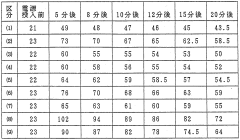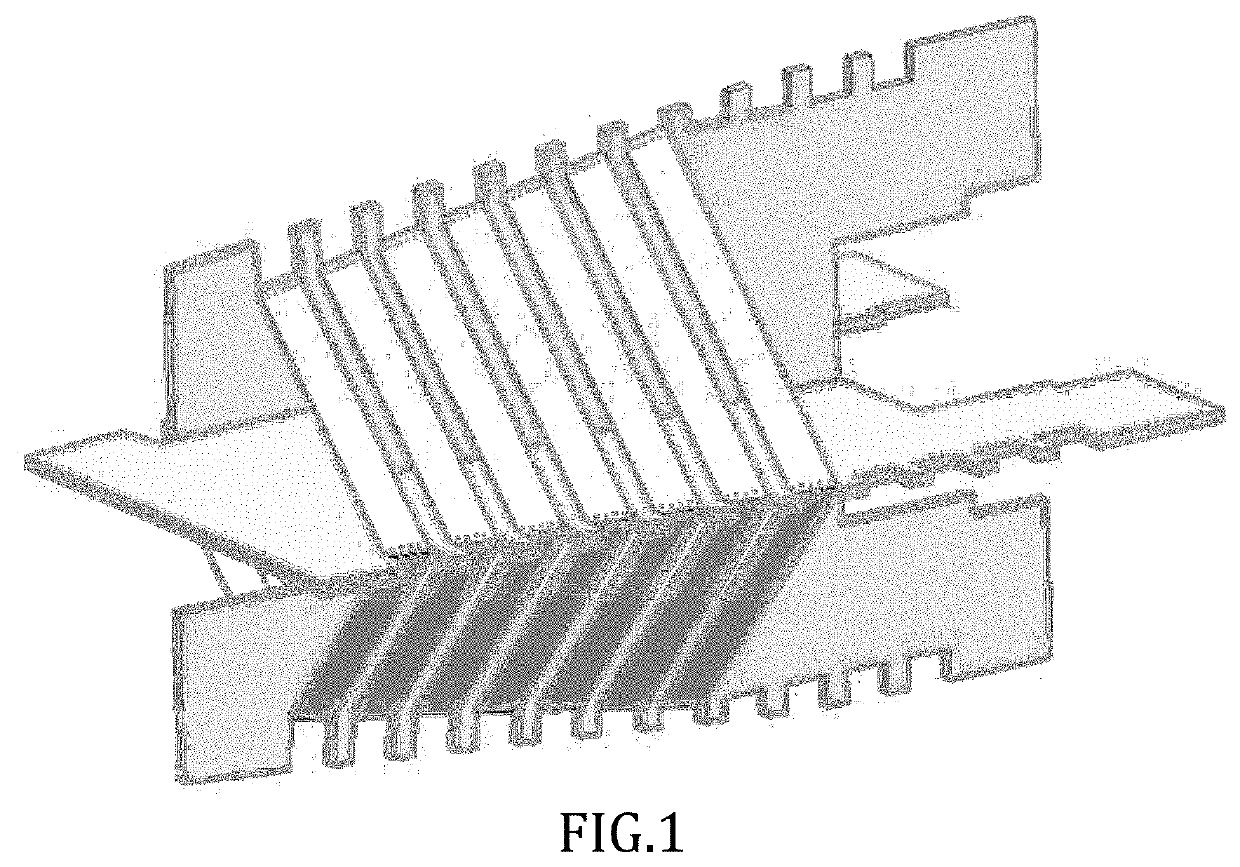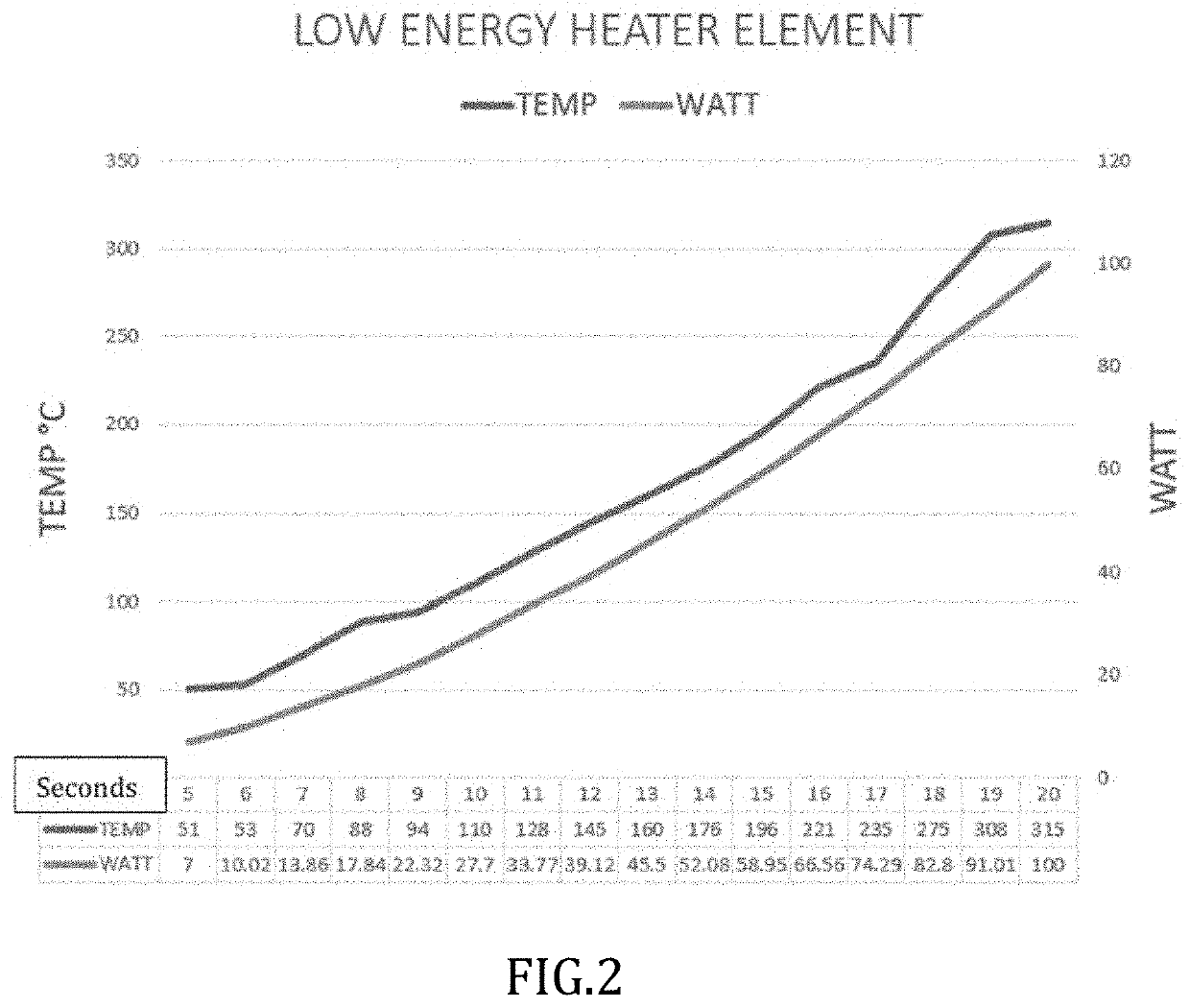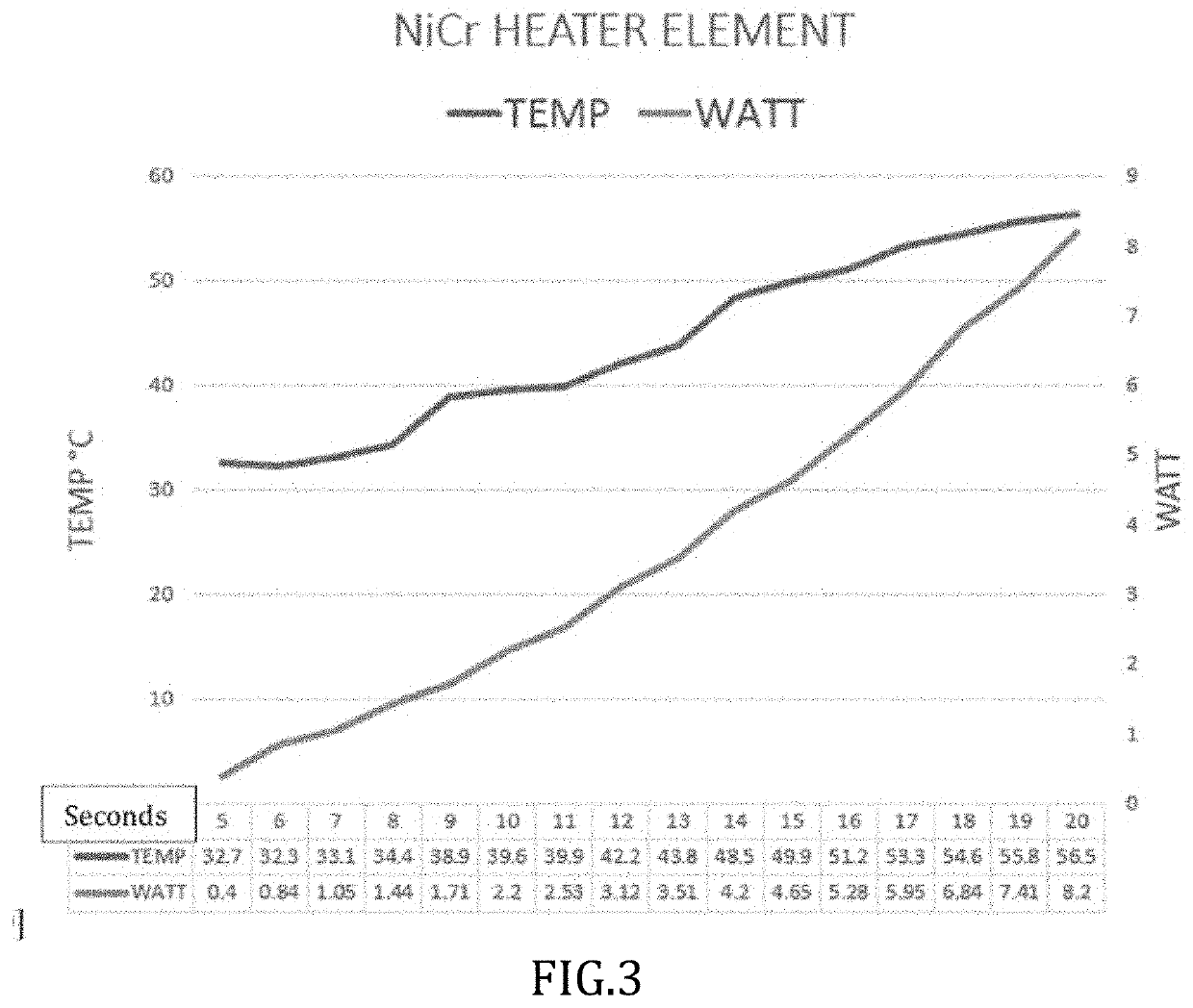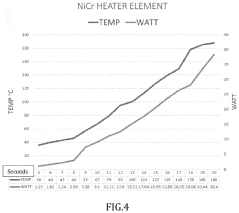How Nichrome Supports Long-Lasting Heating Devices?
JUL 11, 20259 MIN READ
Generate Your Research Report Instantly with AI Agent
Patsnap Eureka helps you evaluate technical feasibility & market potential.
Nichrome Technology Evolution and Objectives
Nichrome, an alloy primarily composed of nickel and chromium, has played a pivotal role in the evolution of heating devices since its invention in the early 20th century. The development of this material marked a significant milestone in the field of electrical heating, offering a combination of high resistivity and excellent oxidation resistance at elevated temperatures.
The journey of nichrome began with its initial application in electrical heating elements, where it quickly gained prominence due to its superior properties compared to earlier materials. As the technology progressed, researchers and engineers focused on optimizing the composition and manufacturing processes of nichrome to enhance its performance and longevity in heating applications.
Throughout its evolution, nichrome has undergone several iterations to improve its durability and efficiency. Early versions of the alloy contained approximately 80% nickel and 20% chromium, but subsequent research led to the development of various grades with different compositions tailored for specific applications. These advancements aimed to address challenges such as thermal fatigue, oxidation resistance, and electrical stability under prolonged use.
The objectives driving the continuous improvement of nichrome technology have been multifaceted. Primarily, there has been a consistent focus on extending the lifespan of heating devices by enhancing the material's resistance to degradation at high temperatures. This goal has been pursued through modifications in alloy composition, surface treatments, and manufacturing techniques.
Another key objective has been to improve the energy efficiency of nichrome-based heating elements. Researchers have worked on optimizing the electrical resistivity and thermal conductivity of the alloy to achieve faster heating rates and more uniform heat distribution. These efforts have contributed to the development of more energy-efficient appliances and industrial heating systems.
As environmental concerns have gained prominence, the nichrome technology evolution has also aimed at reducing the environmental impact of heating devices. This has involved developing alloys with improved recyclability and exploring ways to minimize the use of rare or environmentally sensitive materials in the production process.
The ongoing evolution of nichrome technology continues to focus on pushing the boundaries of material performance. Current research objectives include developing nichrome-based composites and nanostructured materials to further enhance durability and efficiency. Additionally, there is a growing interest in integrating smart features into nichrome heating elements, such as self-diagnostic capabilities and adaptive power control, to meet the demands of modern, connected devices.
The journey of nichrome began with its initial application in electrical heating elements, where it quickly gained prominence due to its superior properties compared to earlier materials. As the technology progressed, researchers and engineers focused on optimizing the composition and manufacturing processes of nichrome to enhance its performance and longevity in heating applications.
Throughout its evolution, nichrome has undergone several iterations to improve its durability and efficiency. Early versions of the alloy contained approximately 80% nickel and 20% chromium, but subsequent research led to the development of various grades with different compositions tailored for specific applications. These advancements aimed to address challenges such as thermal fatigue, oxidation resistance, and electrical stability under prolonged use.
The objectives driving the continuous improvement of nichrome technology have been multifaceted. Primarily, there has been a consistent focus on extending the lifespan of heating devices by enhancing the material's resistance to degradation at high temperatures. This goal has been pursued through modifications in alloy composition, surface treatments, and manufacturing techniques.
Another key objective has been to improve the energy efficiency of nichrome-based heating elements. Researchers have worked on optimizing the electrical resistivity and thermal conductivity of the alloy to achieve faster heating rates and more uniform heat distribution. These efforts have contributed to the development of more energy-efficient appliances and industrial heating systems.
As environmental concerns have gained prominence, the nichrome technology evolution has also aimed at reducing the environmental impact of heating devices. This has involved developing alloys with improved recyclability and exploring ways to minimize the use of rare or environmentally sensitive materials in the production process.
The ongoing evolution of nichrome technology continues to focus on pushing the boundaries of material performance. Current research objectives include developing nichrome-based composites and nanostructured materials to further enhance durability and efficiency. Additionally, there is a growing interest in integrating smart features into nichrome heating elements, such as self-diagnostic capabilities and adaptive power control, to meet the demands of modern, connected devices.
Market Demand for Durable Heating Solutions
The market demand for durable heating solutions has been steadily increasing across various industries and applications. This growth is driven by the need for reliable, long-lasting heating devices that can withstand continuous use and harsh environments. Nichrome, a nickel-chromium alloy, plays a crucial role in meeting this demand due to its exceptional heat resistance and durability.
In the industrial sector, there is a significant demand for heating elements that can operate at high temperatures for extended periods. Manufacturing processes, such as plastic extrusion, metal heat treatment, and glass production, require consistent and reliable heat sources. Nichrome-based heating devices offer the stability and longevity needed in these applications, reducing downtime and maintenance costs.
The automotive industry also contributes to the growing demand for durable heating solutions. With the rise of electric vehicles, efficient cabin heating systems that do not rely on engine heat are essential. Nichrome-based heating elements in seat warmers, defrosters, and battery thermal management systems provide the necessary performance and reliability for these applications.
In the consumer appliance market, there is an increasing preference for long-lasting heating devices. Products such as hair dryers, toasters, and space heaters benefit from Nichrome's ability to withstand repeated heating and cooling cycles without degradation. This durability translates to longer product lifespans and improved customer satisfaction.
The aerospace and defense sectors require heating solutions that can operate in extreme conditions. Nichrome-based heating elements are used in de-icing systems for aircraft wings and sensors, as well as in satellite components that must function reliably in the harsh environment of space.
The medical industry also relies on durable heating solutions for various applications, including sterilization equipment, incubators, and diagnostic devices. The consistent performance and longevity of Nichrome-based heating elements ensure the reliability and accuracy of these critical medical instruments.
As energy efficiency becomes increasingly important, there is a growing demand for heating solutions that can maintain their performance over time. Nichrome's stable electrical resistance properties contribute to consistent energy consumption, making it an attractive option for manufacturers looking to meet stringent energy efficiency standards.
The global push towards renewable energy sources has also created new opportunities for durable heating solutions. Solar thermal systems and energy storage technologies often require reliable heating elements that can withstand frequent temperature fluctuations and maintain efficiency over many years of operation.
In the industrial sector, there is a significant demand for heating elements that can operate at high temperatures for extended periods. Manufacturing processes, such as plastic extrusion, metal heat treatment, and glass production, require consistent and reliable heat sources. Nichrome-based heating devices offer the stability and longevity needed in these applications, reducing downtime and maintenance costs.
The automotive industry also contributes to the growing demand for durable heating solutions. With the rise of electric vehicles, efficient cabin heating systems that do not rely on engine heat are essential. Nichrome-based heating elements in seat warmers, defrosters, and battery thermal management systems provide the necessary performance and reliability for these applications.
In the consumer appliance market, there is an increasing preference for long-lasting heating devices. Products such as hair dryers, toasters, and space heaters benefit from Nichrome's ability to withstand repeated heating and cooling cycles without degradation. This durability translates to longer product lifespans and improved customer satisfaction.
The aerospace and defense sectors require heating solutions that can operate in extreme conditions. Nichrome-based heating elements are used in de-icing systems for aircraft wings and sensors, as well as in satellite components that must function reliably in the harsh environment of space.
The medical industry also relies on durable heating solutions for various applications, including sterilization equipment, incubators, and diagnostic devices. The consistent performance and longevity of Nichrome-based heating elements ensure the reliability and accuracy of these critical medical instruments.
As energy efficiency becomes increasingly important, there is a growing demand for heating solutions that can maintain their performance over time. Nichrome's stable electrical resistance properties contribute to consistent energy consumption, making it an attractive option for manufacturers looking to meet stringent energy efficiency standards.
The global push towards renewable energy sources has also created new opportunities for durable heating solutions. Solar thermal systems and energy storage technologies often require reliable heating elements that can withstand frequent temperature fluctuations and maintain efficiency over many years of operation.
Nichrome Properties and Current Challenges
Nichrome, an alloy primarily composed of nickel and chromium, has been a cornerstone in the development of long-lasting heating devices due to its unique properties. This material exhibits exceptional resistance to oxidation and corrosion, even at high temperatures, making it ideal for applications requiring sustained heat generation. Its high electrical resistivity allows for efficient conversion of electrical energy into heat, while its relatively low thermal expansion coefficient ensures dimensional stability during temperature fluctuations.
One of the key advantages of nichrome is its ability to maintain consistent performance over extended periods. The chromium content forms a protective oxide layer on the surface, preventing further oxidation and extending the lifespan of heating elements. This self-passivation characteristic is crucial for devices that require prolonged operation in harsh environments or at elevated temperatures.
Despite its numerous benefits, nichrome faces several challenges in modern heating applications. The increasing demand for more energy-efficient and faster-responding heating systems has pushed the limits of traditional nichrome-based solutions. While nichrome offers excellent stability, its thermal responsiveness is not as rapid as some newer materials, potentially limiting its use in applications requiring quick temperature changes.
Another significant challenge lies in the material's maximum operating temperature. Although nichrome can withstand high temperatures, there is a growing need for heating elements that can operate at even higher temperatures for specialized industrial processes. This limitation has spurred research into alternative alloys and composite materials that can surpass nichrome's temperature threshold while maintaining its other beneficial properties.
The rising cost of nickel, a primary component of nichrome, presents an economic challenge for manufacturers. Fluctuations in raw material prices can impact the cost-effectiveness of nichrome-based heating solutions, prompting the exploration of alternative compositions or manufacturing techniques to optimize material usage without compromising performance.
Miniaturization trends in electronics and appliances have also posed challenges for nichrome applications. As devices become smaller and more compact, there is a need for heating elements that can deliver the same performance in reduced sizes. This requirement has led to investigations into advanced nichrome formulations and novel manufacturing processes to enhance its heat generation efficiency in smaller form factors.
Environmental concerns and regulations regarding the use of certain metals in consumer products have also placed pressure on the nichrome industry. While nichrome is generally considered safe, there is ongoing research to develop even more environmentally friendly alternatives that can match or exceed its performance characteristics.
One of the key advantages of nichrome is its ability to maintain consistent performance over extended periods. The chromium content forms a protective oxide layer on the surface, preventing further oxidation and extending the lifespan of heating elements. This self-passivation characteristic is crucial for devices that require prolonged operation in harsh environments or at elevated temperatures.
Despite its numerous benefits, nichrome faces several challenges in modern heating applications. The increasing demand for more energy-efficient and faster-responding heating systems has pushed the limits of traditional nichrome-based solutions. While nichrome offers excellent stability, its thermal responsiveness is not as rapid as some newer materials, potentially limiting its use in applications requiring quick temperature changes.
Another significant challenge lies in the material's maximum operating temperature. Although nichrome can withstand high temperatures, there is a growing need for heating elements that can operate at even higher temperatures for specialized industrial processes. This limitation has spurred research into alternative alloys and composite materials that can surpass nichrome's temperature threshold while maintaining its other beneficial properties.
The rising cost of nickel, a primary component of nichrome, presents an economic challenge for manufacturers. Fluctuations in raw material prices can impact the cost-effectiveness of nichrome-based heating solutions, prompting the exploration of alternative compositions or manufacturing techniques to optimize material usage without compromising performance.
Miniaturization trends in electronics and appliances have also posed challenges for nichrome applications. As devices become smaller and more compact, there is a need for heating elements that can deliver the same performance in reduced sizes. This requirement has led to investigations into advanced nichrome formulations and novel manufacturing processes to enhance its heat generation efficiency in smaller form factors.
Environmental concerns and regulations regarding the use of certain metals in consumer products have also placed pressure on the nichrome industry. While nichrome is generally considered safe, there is ongoing research to develop even more environmentally friendly alternatives that can match or exceed its performance characteristics.
Current Nichrome-based Heating Device Designs
01 Composition and structure optimization
Improving the longevity of nichrome involves optimizing its composition and structure. This includes adjusting the ratio of nickel to chromium, adding other alloying elements, and controlling the microstructure through heat treatment and manufacturing processes. These modifications can enhance the material's resistance to oxidation, corrosion, and thermal fatigue, thereby extending its lifespan in high-temperature applications.- Composition and manufacturing of nichrome alloys: Nichrome alloys are composed of nickel and chromium, with varying ratios to optimize longevity and performance. Manufacturing processes, such as heat treatment and surface finishing, can significantly impact the durability of nichrome components. Proper composition and manufacturing techniques can enhance the alloy's resistance to oxidation and corrosion, thereby increasing its longevity.
- Protective coatings for nichrome elements: Applying protective coatings to nichrome elements can greatly improve their longevity. These coatings may include ceramic materials, metal oxides, or other heat-resistant compounds that protect the nichrome from oxidation and wear. The coating process and material selection are crucial for ensuring long-term performance and durability of nichrome components in high-temperature applications.
- Temperature control and power management: Implementing effective temperature control and power management systems can significantly extend the life of nichrome elements. This includes using advanced sensors, feedback mechanisms, and intelligent power regulation to prevent overheating and reduce thermal stress. Proper thermal management ensures that nichrome components operate within their optimal temperature range, minimizing degradation and extending their useful life.
- Environmental factors and operating conditions: The longevity of nichrome is greatly influenced by its operating environment. Factors such as humidity, atmospheric composition, and exposure to corrosive substances can affect its lifespan. Designing systems that minimize exposure to harmful environmental factors and optimizing operating conditions can significantly enhance the durability of nichrome components. This may include using protective enclosures, controlling ambient conditions, or implementing purge systems.
- Maintenance and replacement strategies: Developing effective maintenance and replacement strategies is crucial for maximizing nichrome longevity. This includes regular inspections, predictive maintenance techniques, and timely replacement of worn components. Implementing condition monitoring systems and data-driven maintenance schedules can help prevent premature failure and optimize the lifespan of nichrome elements in various applications.
02 Protective coatings and surface treatments
Applying protective coatings or surface treatments to nichrome components can significantly improve their longevity. These coatings may include ceramic layers, oxidation-resistant alloys, or diffusion barriers. Surface treatments such as nitriding or carburizing can also enhance the material's wear resistance and thermal stability, contributing to increased lifespan in harsh environments.Expand Specific Solutions03 Environmental control and monitoring
Controlling the operating environment and implementing monitoring systems can extend nichrome longevity. This involves managing factors such as temperature, humidity, and atmospheric composition in the application area. Advanced sensors and data analysis techniques can be used to detect early signs of degradation, allowing for timely maintenance or replacement of nichrome components before failure occurs.Expand Specific Solutions04 Stress management and design optimization
Enhancing nichrome longevity through stress management involves optimizing component design to minimize thermal and mechanical stresses. This can include implementing stress-relief features, improving heat distribution, and using computer-aided design and simulation tools to identify and mitigate potential failure points. Proper design can significantly extend the operational life of nichrome elements in various applications.Expand Specific Solutions05 Predictive maintenance and lifecycle management
Implementing predictive maintenance strategies and lifecycle management techniques can maximize nichrome longevity. This involves using advanced analytics, machine learning algorithms, and historical performance data to predict potential failures and optimize maintenance schedules. By proactively addressing wear and degradation, the operational lifespan of nichrome components can be significantly extended.Expand Specific Solutions
Key Manufacturers in Nichrome Industry
The market for nichrome-supported long-lasting heating devices is in a mature growth stage, with a substantial global market size driven by increasing demand for energy-efficient and durable heating solutions. The technology's maturity is evident from the involvement of established players like Kyocera Corp., Arkema France SA, and Panasonic Holdings Corp., who leverage their expertise in materials science and electronics to develop advanced heating solutions. Emerging companies such as Exergyn Ltd. and Akurate Dynamics LLC are introducing innovative applications, focusing on solid-state HVAC technology and smart heating systems, respectively. Research institutions like Texas A&M University and The University of Edinburgh contribute to ongoing advancements in nichrome-based heating technologies, ensuring continued evolution in this field.
Yancheng Xinyang Electric Heating Material Co., Ltd.
Technical Solution: Yancheng Xinyang specializes in the production of high-quality nichrome wires and ribbons for various heating applications. Their manufacturing process involves precise control of alloy composition and heat treatment to achieve optimal electrical and mechanical properties[13]. The company has developed a range of nichrome alloys with varying nickel-chromium ratios to suit different temperature requirements and operating environments[14]. Yancheng Xinyang's nichrome products feature enhanced surface treatments that improve oxidation resistance and extend the lifespan of heating elements[15]. They also offer customized nichrome solutions, including shaped wires and specialized coatings, to meet specific customer needs in industries such as home appliances, automotive, and industrial heating.
Strengths: Wide range of nichrome alloy compositions, customizable products, and cost-effective solutions for various applications. Weaknesses: May lack the advanced integrated systems or proprietary technologies of larger, more diversified companies.
Nippon Yakin Kogyo Co., Ltd.
Technical Solution: Nippon Yakin Kogyo has developed advanced nichrome alloys with improved heat resistance and longevity. Their proprietary composition includes precise amounts of nickel, chromium, and trace elements to enhance oxidation resistance at high temperatures. The company's nichrome wires and ribbons are manufactured using a controlled cooling process that optimizes grain structure for long-term stability[1]. These nichrome products are designed to maintain consistent electrical resistance and mechanical properties even after thousands of heating cycles, supporting extended lifespans in heating devices[2]. Nippon Yakin Kogyo also offers custom nichrome formulations tailored to specific application requirements, such as rapid heating or corrosion resistance in harsh environments[3].
Strengths: Superior heat resistance, long-term stability, and customizable alloy compositions. Weaknesses: Potentially higher cost compared to standard nichrome alloys, and may require specialized manufacturing processes.
Innovations in Nichrome Alloy Composition
Electric heater and heat exchanger employing the same
PatentWO1985000084A1
Innovation
- A bare nichrome wire is immersed in silicone oil, which provides rapid temperature rise, excellent insulation, oxidation resistance, and durability, preventing oxidation and ensuring safety by using silicone oil with good thermal and electrical properties.
Low power high-efficiency heating element
PatentInactiveUS20200113020A1
Innovation
- A DC-powered heating element with a metal filament coated with insulating materials like zirconium carbide, hafnium carbide, and tantalum carbide, which allows for efficient heat production at high temperatures using low energy input, typically 55-60 watts, and is safer than traditional AC-powered elements.
Energy Efficiency of Nichrome Heating Elements
Nichrome, an alloy primarily composed of nickel and chromium, has become a cornerstone in the development of long-lasting heating devices due to its exceptional energy efficiency. This efficiency is attributed to several key factors that make nichrome an ideal material for heating elements.
The high electrical resistivity of nichrome is a primary contributor to its energy efficiency. When an electric current passes through the nichrome wire, it encounters resistance, which generates heat. This property allows for rapid and uniform heating, ensuring that energy is efficiently converted into thermal output. The resistivity of nichrome remains relatively stable across a wide range of temperatures, contributing to consistent performance and energy utilization.
Another crucial aspect of nichrome's energy efficiency is its excellent thermal conductivity. This property enables the rapid and even distribution of heat across the heating element, minimizing hot spots and ensuring uniform temperature distribution. As a result, less energy is wasted in overheating specific areas, leading to more efficient overall heat generation and transfer.
The durability of nichrome further enhances its energy efficiency in long-term applications. The alloy's high melting point and resistance to oxidation at elevated temperatures allow it to maintain its structural integrity and performance characteristics over extended periods. This longevity reduces the need for frequent replacements, thereby conserving energy and resources that would otherwise be expended in manufacturing and installing new heating elements.
Nichrome's low thermal expansion coefficient is another factor contributing to its energy efficiency. This property minimizes mechanical stress on the heating element during temperature fluctuations, reducing the risk of deformation or failure. Consequently, the heating device maintains its optimal geometry and performance characteristics, ensuring consistent energy efficiency throughout its operational life.
The ability to precisely control the electrical properties of nichrome through composition adjustments allows for the optimization of heating elements for specific applications. This tailoring enables manufacturers to create heating devices that operate at peak efficiency for their intended use, whether it be in household appliances, industrial processes, or specialized scientific equipment.
In the context of long-lasting heating devices, the cumulative effect of these properties translates into significant energy savings over time. The combination of efficient heat generation, uniform distribution, and long-term stability means that nichrome-based heating elements can maintain their performance with minimal energy loss, even after prolonged use. This sustained efficiency not only reduces operational costs but also contributes to the overall sustainability of heating systems by minimizing energy consumption and associated environmental impacts.
The high electrical resistivity of nichrome is a primary contributor to its energy efficiency. When an electric current passes through the nichrome wire, it encounters resistance, which generates heat. This property allows for rapid and uniform heating, ensuring that energy is efficiently converted into thermal output. The resistivity of nichrome remains relatively stable across a wide range of temperatures, contributing to consistent performance and energy utilization.
Another crucial aspect of nichrome's energy efficiency is its excellent thermal conductivity. This property enables the rapid and even distribution of heat across the heating element, minimizing hot spots and ensuring uniform temperature distribution. As a result, less energy is wasted in overheating specific areas, leading to more efficient overall heat generation and transfer.
The durability of nichrome further enhances its energy efficiency in long-term applications. The alloy's high melting point and resistance to oxidation at elevated temperatures allow it to maintain its structural integrity and performance characteristics over extended periods. This longevity reduces the need for frequent replacements, thereby conserving energy and resources that would otherwise be expended in manufacturing and installing new heating elements.
Nichrome's low thermal expansion coefficient is another factor contributing to its energy efficiency. This property minimizes mechanical stress on the heating element during temperature fluctuations, reducing the risk of deformation or failure. Consequently, the heating device maintains its optimal geometry and performance characteristics, ensuring consistent energy efficiency throughout its operational life.
The ability to precisely control the electrical properties of nichrome through composition adjustments allows for the optimization of heating elements for specific applications. This tailoring enables manufacturers to create heating devices that operate at peak efficiency for their intended use, whether it be in household appliances, industrial processes, or specialized scientific equipment.
In the context of long-lasting heating devices, the cumulative effect of these properties translates into significant energy savings over time. The combination of efficient heat generation, uniform distribution, and long-term stability means that nichrome-based heating elements can maintain their performance with minimal energy loss, even after prolonged use. This sustained efficiency not only reduces operational costs but also contributes to the overall sustainability of heating systems by minimizing energy consumption and associated environmental impacts.
Safety Standards for Nichrome-based Devices
Safety standards for Nichrome-based devices are crucial to ensure the reliable and secure operation of long-lasting heating appliances. These standards encompass various aspects of device design, manufacturing, and usage to mitigate potential risks associated with high-temperature operations.
One of the primary safety considerations for Nichrome-based devices is electrical insulation. Proper insulation is essential to prevent electrical leakage and short circuits, which could lead to fire hazards or electric shocks. Standards typically specify minimum insulation requirements, including the use of high-temperature resistant materials and appropriate spacing between conductive components.
Thermal management is another critical aspect addressed by safety standards. Nichrome heating elements can reach extremely high temperatures, necessitating adequate heat dissipation mechanisms and thermal barriers. Standards often dictate maximum operating temperatures, thermal cycling capabilities, and the implementation of temperature control systems to prevent overheating.
Mechanical integrity is also a key focus of safety regulations. Standards may specify requirements for the physical construction of Nichrome-based devices, including the strength and durability of materials used, resistance to vibration and shock, and protection against mechanical damage that could compromise the heating element's integrity.
Fire safety is a paramount concern in Nichrome-based heating devices. Safety standards typically mandate the use of fire-resistant materials in device construction, as well as the incorporation of fail-safe mechanisms such as thermal fuses or circuit breakers to cut power in case of abnormal temperature increases.
Environmental considerations are increasingly being integrated into safety standards for Nichrome-based devices. This includes requirements for energy efficiency, emissions control, and the use of environmentally friendly materials in device construction. Standards may also address the safe disposal of devices at the end of their lifecycle.
Labeling and user instructions form an important part of safety standards. Clear and comprehensive labeling requirements ensure that users are aware of potential hazards and proper usage guidelines. This may include warnings about hot surfaces, electrical safety precautions, and instructions for safe operation and maintenance.
Compliance testing and certification processes are typically outlined in safety standards for Nichrome-based devices. These may include rigorous testing procedures to verify electrical safety, thermal performance, and durability under various operating conditions. Certification requirements ensure that devices meet all applicable safety standards before they can be marketed and sold.
As technology evolves, safety standards for Nichrome-based devices are continually updated to address new challenges and incorporate improved safety measures. This ongoing process involves collaboration between regulatory bodies, industry experts, and research institutions to enhance the overall safety and reliability of long-lasting heating devices.
One of the primary safety considerations for Nichrome-based devices is electrical insulation. Proper insulation is essential to prevent electrical leakage and short circuits, which could lead to fire hazards or electric shocks. Standards typically specify minimum insulation requirements, including the use of high-temperature resistant materials and appropriate spacing between conductive components.
Thermal management is another critical aspect addressed by safety standards. Nichrome heating elements can reach extremely high temperatures, necessitating adequate heat dissipation mechanisms and thermal barriers. Standards often dictate maximum operating temperatures, thermal cycling capabilities, and the implementation of temperature control systems to prevent overheating.
Mechanical integrity is also a key focus of safety regulations. Standards may specify requirements for the physical construction of Nichrome-based devices, including the strength and durability of materials used, resistance to vibration and shock, and protection against mechanical damage that could compromise the heating element's integrity.
Fire safety is a paramount concern in Nichrome-based heating devices. Safety standards typically mandate the use of fire-resistant materials in device construction, as well as the incorporation of fail-safe mechanisms such as thermal fuses or circuit breakers to cut power in case of abnormal temperature increases.
Environmental considerations are increasingly being integrated into safety standards for Nichrome-based devices. This includes requirements for energy efficiency, emissions control, and the use of environmentally friendly materials in device construction. Standards may also address the safe disposal of devices at the end of their lifecycle.
Labeling and user instructions form an important part of safety standards. Clear and comprehensive labeling requirements ensure that users are aware of potential hazards and proper usage guidelines. This may include warnings about hot surfaces, electrical safety precautions, and instructions for safe operation and maintenance.
Compliance testing and certification processes are typically outlined in safety standards for Nichrome-based devices. These may include rigorous testing procedures to verify electrical safety, thermal performance, and durability under various operating conditions. Certification requirements ensure that devices meet all applicable safety standards before they can be marketed and sold.
As technology evolves, safety standards for Nichrome-based devices are continually updated to address new challenges and incorporate improved safety measures. This ongoing process involves collaboration between regulatory bodies, industry experts, and research institutions to enhance the overall safety and reliability of long-lasting heating devices.
Unlock deeper insights with Patsnap Eureka Quick Research — get a full tech report to explore trends and direct your research. Try now!
Generate Your Research Report Instantly with AI Agent
Supercharge your innovation with Patsnap Eureka AI Agent Platform!
